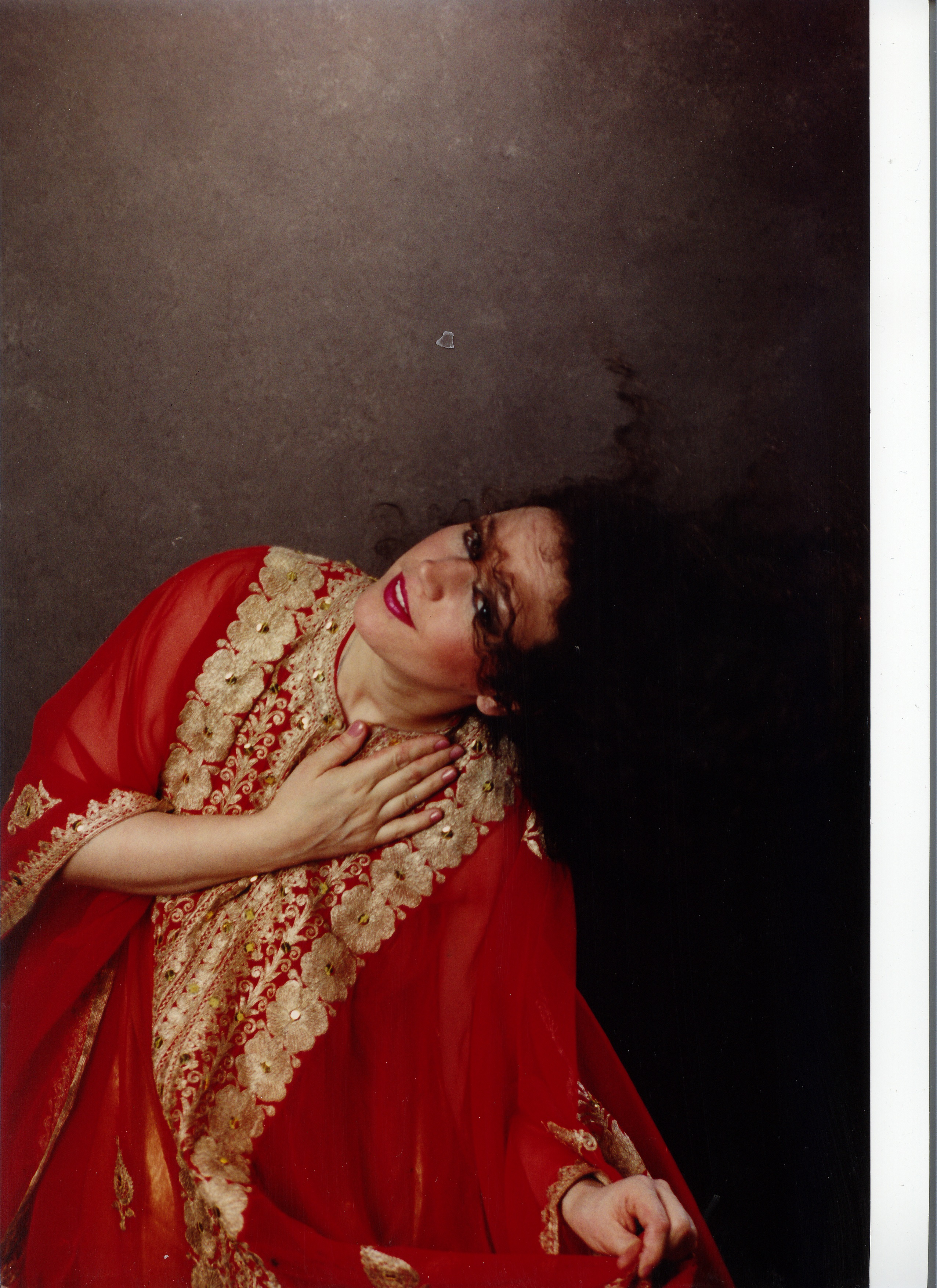
 Khaleegy (Gulf Region)
Khaleegy (Gulf Region)
This typical women’s dance comes from the Gulf Region, (e.g., Persian Gulf/Arabian Peninsula, Saudi Arabia, Kuwait, Bahrain, Oman, Qatar (United Arab Emirates). Because this dance comes from the Arabic gulf region, the khaleej, explains why it is often called khaleeji but it is not the only dance they have for this region. The locals in the Emirates call it raks na’ashat to distinguish the women’s dance from the various men’s dances. In Kuwait it can be referred to as Samra/Samri and in Saudi Arabia it can be referred to as Saudi. It is said that this dance was “imported”. There are also a variety of dance forms in the Khaleej mostly performed by men (some with a variety of weapons).
Khaleegy is also known as the Hair Dance. The women often dance in groups, toss their hair and gracefully make small gliding steps, but it is much more than a “Hair Dance.” There are a few basic steps that can be explained as “limping” or “gliding”. These steps are used with variations of manipulating their large dresses, executing small shoulder shimmies, head slides and occasional accents, as well as the use of hand gestures. Some hand gestures are very typical while some may have a different meaning. There is very little hip work involved, some hip circles with one hip and small hip drops. Learning raks na’ashat would be beneficial to Oriental dancers as many pieces of Classical music for Raks Sharki include a small Khaleegy part.
The traditional dress for this dance is known as a Thobe Al Nasha’ar. Nasha’ar translated means “to spread out, to unfold, open, or to hoist, thus explaining the various movements executed with the dress and the manner in which it is held. Currently there are two types of Thobe Al Nasha’ar also known as darrah zerri . The traditional style of dress is longer in the back than in the front. The other is a more modern style which is cut floor length all the way around. The traditional style of dress is the one most used for this dance. The under dress for the traditional dress is whatever the women have on at the time to include jeans. The modern version is worn over a matching galabia with long sleeves. For a more theatrical look, you can have a long sleeved galabia from gold or silver fabric so it shines through the thobe as they are somewhat sheer.
The Khaleej is very rich in rhythms and aside from what is referred to as the Khaleegy/Saudi 2/4 rhythm that is commonly used, (Dum Dum teka Dum Dum), there are many others, e.g., Ashory, Emerati, Daza, Bastah, Shara. The most popular songs used “Leyla Leyla” aka “Aba’ad” (Boad) as it is called originally and “Wah Wah” (“And And”).
NOTE: There is a hair dance/trance dance called NACH in North Africa (Tunisia) that is very similar to the khaleegy. The women dance mostly in a kneeling position on the floor.
References: Nadia Hamdi, Cairo, Egypt, Khadejah El Oueslati, [email protected], Kay Campbell Hardy, www.kayhardycampbell.com.